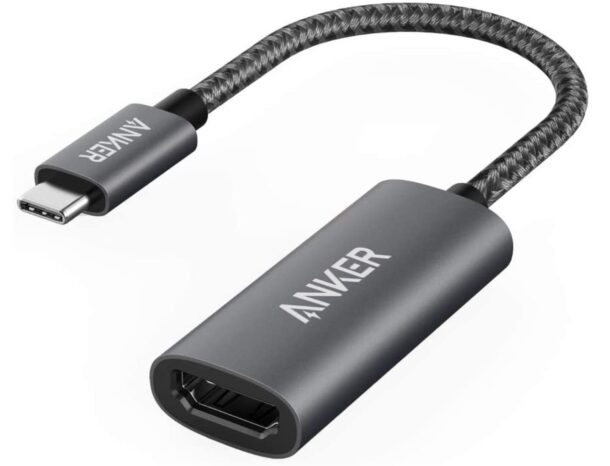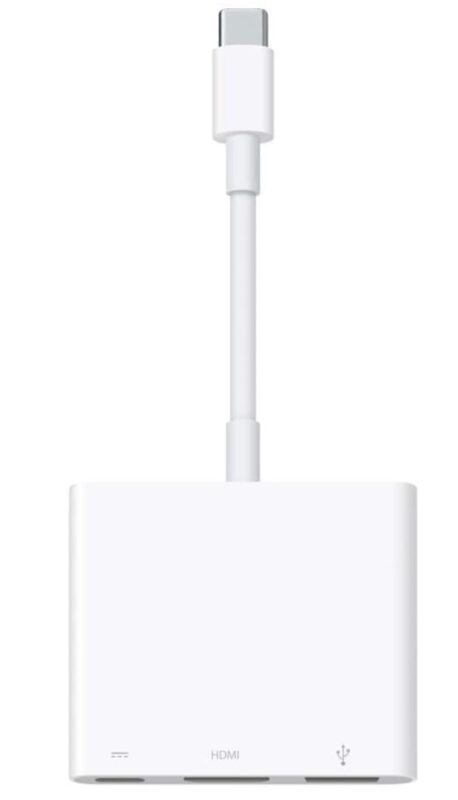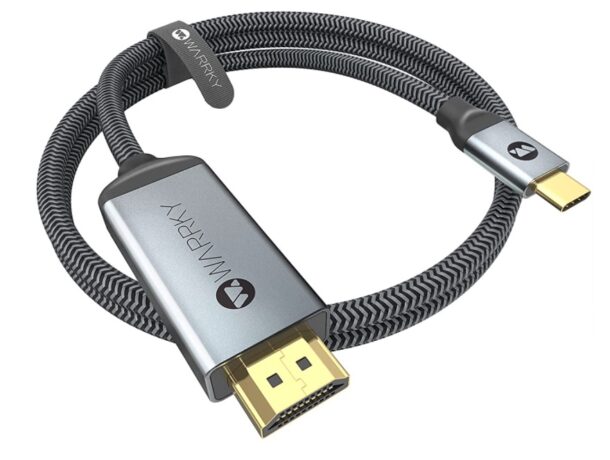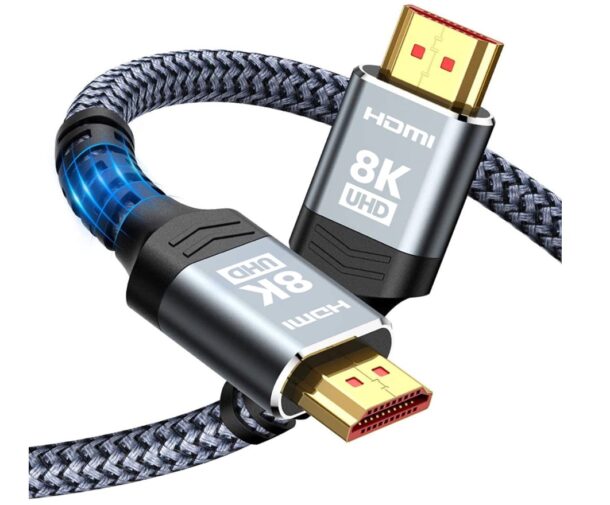How Do I Connect MacBook Pro/Air to a TV?

If you have a newer MacBook Pro or MacBook Air with only USB-C ports, you may be wondering how to connect the MacBook to a TV.
Maybe you want to use the TV as a larger display, or perhaps you want to watch a movie from the computer on the bigger TV screen, or use it for gaming.
Whatever the reason, it’s easy to do, but you will need to have the appropriate cables.
To be clear, we’re talking about MacBook Pro models that are 2016 and newer (including the 2020 and 2021 M1 MacBook Pro), and MacBook Air models from 2018 and newer (also including the M1 MacBook Air). The USB-C ports look like this:

Assuming your MacBook Pro or MacBook Air has USB-C ports, you’re good to go.
What do I need to connect my MacBook Pro or MacBook Air to a TV?
Most modern flat screen TV’s will need an HDMI cable, and for the Mac, you’ll need a USB-C to HDMI adapter along with the HDMI cable, or a USB-C to HDMI cable.
Let’s check out some of the options.
Anker USB-C to HDMI adapter for $17 only has a single HDMI port, but if that’s all you need it’s good enough. Remember, you will still need an HDMI cable.
Apple USB-C Digital Multiport Adapter for $70 has HDMI, USB 3, and a USB-C port, which gives you a lot more options for other peripherals. Again, you will still need an HDMI cable.
USB-C to HDMI cable for $15 is not a dongle, but instead bridges USB-C directly to HDMI. The advantage to this is it will not require a separate HDMI cable, since it’s an all-in-one.
HDMI braided cable for $20 carries both video and audio signal, and supports higher resolution video output which matters if you want to watch something like 4K video. You will need a USB-C adapter to be able to connect this from the Mac to the TV.
Connecting the MacBook to a TV
Once you have the proper cables, all you need to do is connect the the appropriate cable to the Mac, and then to the HDMI port on the TV.
For what it’s worth, there are plenty of other cable options available on Amazon but these are a few with good ratings and from reputable companies, like Anker and Apple.
And a quick sidenote; though typically connecting a Mac to a TV is trouble-free, some M1 Mac users may experience flickering, white noise, and other display issues, which can usually be remedied by disconnecting and reconnecting, or using a different cable solution.
Of course the aforementioned solutions are a wired solution, meaning there will be a cable stretching from the Mac to the TV. If you’re looking for a wireless solution, a good option for Macs is to use AirPlay.
How do you connect a Mac to a TV wirelessly?
If you want to go wireless, you can use AirPlay.
AirPlay is available if the TV either supports AirPlay natively like some modern LG TV’s, or if you have an Apple TV box connected to the TV, which you can AirPlay to that.
The main advantage to AirPlay is that it’s completely wireless, and quite seamless to use, allowing you to output an iPhone to the TV over AirPlay, or Mac to TV over AirPlay. It’s also easy to use. A downside is it costs a bit more to setup, since you’ll need either a new TV or an Apple TV set-top box to be able to use the feature.
There are other options too, for example the Chromecast allows you to wirelessly transmit the Chrome browser to a TV, but it does not have the full features available as something like AirPlay. Whether or not that’s preferable to using something like USB-C and HDMI cables it up to you.
–
Whatever the route you go, once you connect the Mac to the TV, if the TV is 4k you may notice the 4k resolution is enormous, which can make the size of windows and text too small to be readable or usable. You can change the screen resolution in Apple menu > System Preferences > Display as usual.
This is obviously aimed at modern Macs with USB-C ports. If you have an older MacBook Pro or MacBook Air that you want to connect to a TV, and the Mac has an HDMI port, you can simply connect an HDMI cable from the Mac to the TV. But for modern Macs, you’ll need an adapter for USB-C, as well as the HDMI cable.
By the way, this article uses affiliate links to Amazon, which means we may get a small commission from purchases that help us to pay for the site upkeep.






Direct cable connection from my MacBookAir to my LG TV works seamlessly.
However, connecting wirelessly via AirPlay gives smooth, uninterrupted sound, but the images are stuttering and behind the sound. How can this be solved?
Excellent Did you talk about hooking the iPhone up to the TV?